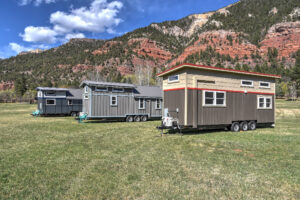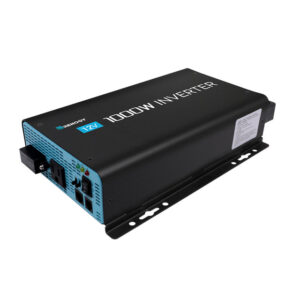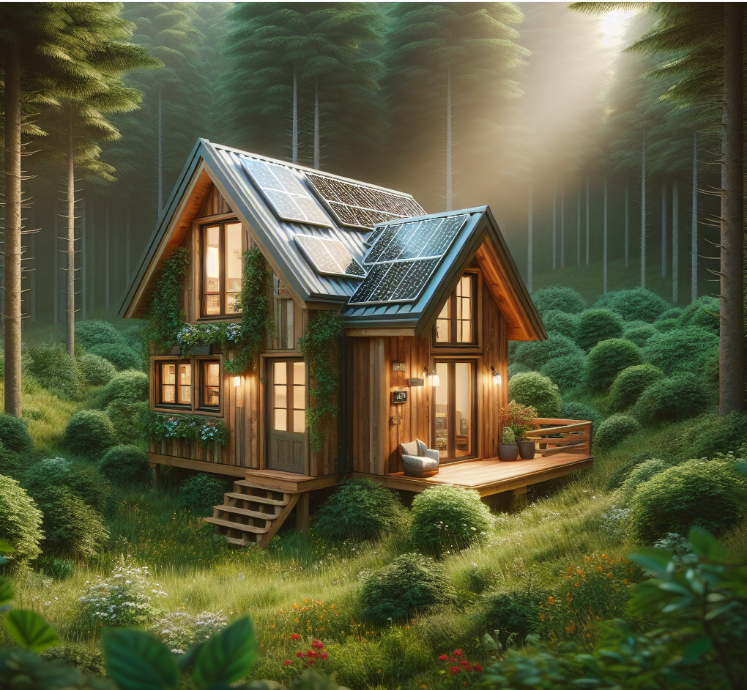
Article-at-a-Glance: Harnessing the Sun for Your Culinary Adventures
- Discover the eco-friendly power of solar kitchens for off-grid living.
- Learn about the benefits of solar energy in tiny homes.
- Explore the innovative GoSun Solar Kitchen and its components.
- Understand the technology behind solar cooking.
- Get inspired to join the sustainable living movement with solar-powered culinary solutions.
Why Go Solar: Embracing Eco-Friendly Living
Imagine waking up to the gentle rays of the sun, not just as a signal of a new day but as the fuel for your morning coffee and breakfast. Going solar isn’t just a trend; it’s a lifestyle choice that brings you closer to nature while reducing your carbon footprint. It’s about making a conscious decision to harness renewable energy for your daily needs, and in the process, giving back to the planet. Off-grid tiny home adventurers, this is your path to self-sufficiency and sustainability.
The Shift Towards Sustainable Solutions
The world is changing, and so are our energy needs. The shift towards sustainable solutions is not just about being ‘green’ – it’s about being smart and forward-thinking. Solar power is at the forefront of this shift, offering a clean, inexhaustible source of energy that can power everything from your lights to your kitchen appliances. And when you’re living off-grid, this shift isn’t just preferred; it’s essential.
Advantages of Solar Power for Tiny Homes
Tiny homes are the epitome of efficient living, and solar power is their perfect partner. Here’s why:
-
Reduced Energy Bills: Sunlight is free, and once you’ve set up your solar kitchen, the savings start rolling in.
-
Increased Independence: Off-grid living means you’re not tied to traditional power grids, giving you the freedom to roam.
-
Minimal Environmental Impact: Solar power is clean, reducing your home’s reliance on fossil fuels and lowering your ecological footprint.
-
Reliability: Modern solar solutions are incredibly reliable, providing consistent power even in remote locations.
-
Scalability: As your energy needs grow, so can your solar setup. It’s as simple as adding more panels.
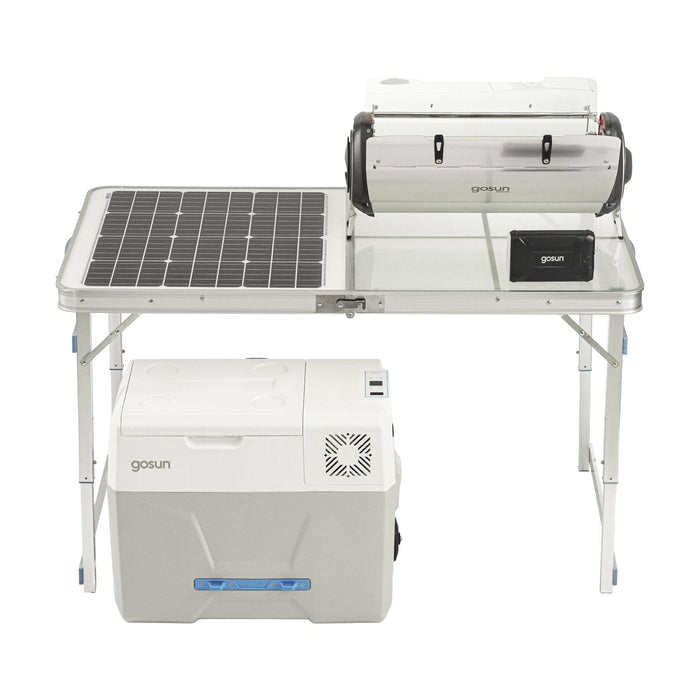
GoSun Solar Kitchen Essentials
Enter GoSun, a game-changer in the realm of solar-powered living. Their Solar Kitchen is the ultimate off-grid culinary setup, designed to make cooking with the sun a breeze. It’s portable, efficient, and most importantly, it works seamlessly to meet your needs. Whether you’re rustling up a hearty stew or just boiling water for tea, GoSun’s got you covered.
Solar Cooking Technology Explained
At the heart of the GoSun Solar Kitchen is cutting-edge solar cooking technology. It’s not just about slapping a solar panel on a traditional stove; it’s a whole new way of thinking about cooking. GoSun’s tech captures sunlight, converting it into heat with incredible efficiency. Even on cloudy days, their patented design ensures you can still cook up a storm. Now, let’s dive into the specifics and see how this technology can revolutionize your off-grid kitchen.
Components of GoSun Solar Kitchen
Let’s get familiar with what makes the GoSun Solar Kitchen tick. This isn’t your average cooktop. It’s a suite of tools designed to harness the sun’s power:
-
Solar Panels: These are the workhorses, converting sunlight into electricity.
-
Portable Stove: Compact and efficient, it’s ready to cook wherever you set up camp.
-
Cooling System: A solar-powered fridge to keep your ingredients fresh and drinks chilled.
-
Charging Station: Power up your devices with the energy you’ve harvested from the sun.
-
Integrated Table: A convenient space for food prep that doubles as a solar panel stand.
-
Accessories: From baking trays to steam racks, every tool you need for a versatile cooking experience.
Each component is designed to work together seamlessly, creating a kitchen that’s as efficient as it is eco-friendly.
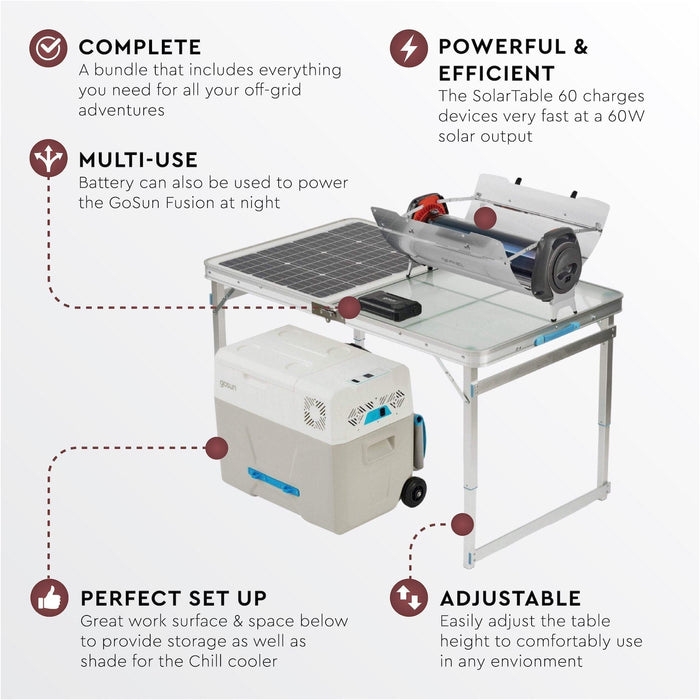
Setting Up Your Solar Kitchen
Setting up your solar kitchen is a breeze. Start by finding the perfect spot – you’ll want somewhere that gets plenty of sunlight throughout the day. Then, unfold your solar panels and position them to catch the most rays. Next, set up your stove and connect it to the panels. Finally, organize your cooking space so everything you need is within arm’s reach. And just like that, you’re ready to cook with the power of the sun.
Choosing the Right Location
Location is everything when it comes to solar cooking. You’ll need a spot that’s sunny for most of the day and sheltered from strong winds that could cool your stove. Look for an area with clear exposure to the south (in the northern hemisphere) or north (in the southern hemisphere) to maximize sunlight. Avoid shadows from trees or buildings, as they can significantly reduce your kitchen’s efficiency.
Maximizing Solar Efficiency
To get the most out of your solar kitchen, follow the sun. Angle your panels so they face directly towards the sun, and adjust them every couple of hours to follow its path across the sky. Keep your panels clean, as dust and dirt can block sunlight. And remember, the best solar cooking is done around midday, when the sun is at its highest and strongest.
Tiny Home Cooking Adventures
Cooking in a tiny home doesn’t mean skimping on flavor or variety. With the GoSun Solar Kitchen, you can whip up everything from a simple breakfast to a gourmet dinner. The key is to plan your meals around the sun’s schedule and get creative with your ingredients. Embrace the adventure that comes with cooking off-grid, and let the sun inspire your culinary creations.
Cooking with GoSun: A Day’s Menu
Here’s a taste of what a day of solar cooking could look like:
-
Breakfast: Sunny-side-up eggs and toast, made to perfection as the morning sun rises.
-
Lunch: A vibrant solar-steamed vegetable medley, paired with quinoa cooked in the midday heat.
-
Dinner: A solar-baked casserole, bubbling away as the sun sets, ready for a cozy evening meal.
With a little planning and the right tools, the sun can take you from breakfast to dinner, fueling your day with delicious, sustainably-cooked meals.
Eco-Friendly Culinary Tips and Tricks
Embracing an off-grid lifestyle means rethinking not just how we cook, but what we cook. Opt for local, seasonal ingredients to minimize your carbon footprint. Plan your meals to use the least amount of energy, like soaking beans overnight to reduce cooking time. And remember, every bit of sun counts – use reflective surfaces to direct more light onto your solar cooker. Here are some more tips to make your solar kitchen a green powerhouse:
-
Prep your ingredients early to make the most of peak sunlight hours.
-
Use a pressure cooker to speed up cooking times and save energy.
-
Batch cook and use the sun to preserve foods through drying or canning.
-
Reuse water from washing veggies to water your plants or garden.
-
Compost your organic waste to create nutrient-rich soil for your garden.
Maintaining Your Off-Grid Kitchen
Maintenance is key to ensuring your solar kitchen stands the test of time. Regularly check your solar panels for any debris or damage. Keep the battery connections clean and tight to ensure efficient energy storage. Inspect your cooking appliances for wear and tear, and be proactive with repairs to avoid any cooking disruptions. A well-maintained kitchen is a reliable one, especially when you’re off the grid.
Cleaning and Care for Longevity
Your solar kitchen deserves the same care as any other kitchen – perhaps even more. After each use, wipe down your solar cooker to prevent buildup of grease and food particles. Clean your solar panels with a soft cloth and soapy water to maintain their efficiency. And don’t forget to dry everything thoroughly to prevent rust or mold. A clean kitchen is a happy kitchen, and when it’s powered by the sun, it’s an eco-friendly one, too.
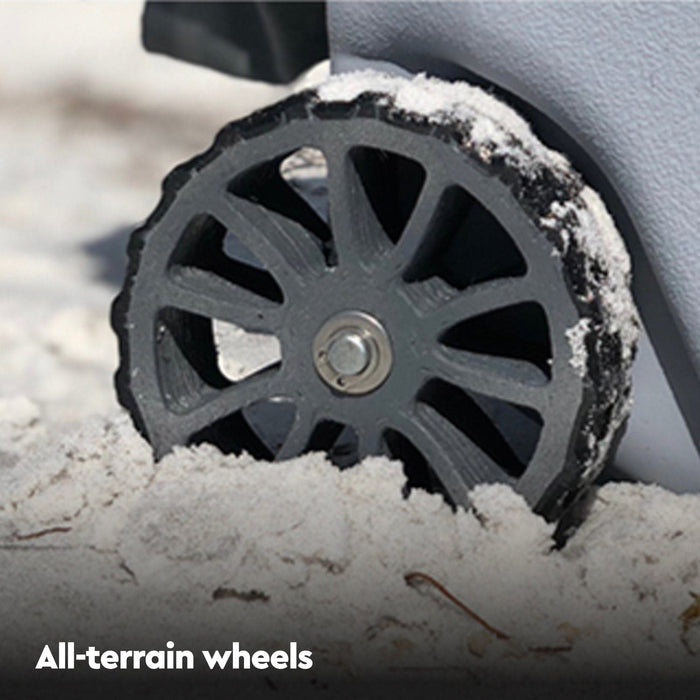
Dealing with Weather Variability and Kitchen Resilience
Weather can be unpredictable, but your solar kitchen can still thrive with a bit of planning. On cloudy days, use insulated cooking pots to retain heat. Store extra energy in batteries or a portable generator for those not-so-sunny days. And when the weather is good, make the most of it – cook extra meals to refrigerate or freeze for later. Adaptability is the name of the game for off-grid living.
Common Hurdles and Solutions
Even with the best setup, challenges can arise. Perhaps the sun is playing hide and seek, or your solar cooker is taking longer than expected. The key is to stay flexible and have backup plans. Keep a stash of pre-cooked meals for days when the sun is scarce. Consider a hybrid system that can use alternative fuels when needed. And always keep a close eye on the weather forecast to plan your cooking around the sun’s availability.
Overcoming Environmental Limitations
Living off-grid doesn’t mean you’re at the mercy of the elements. Build a windbreak to protect your cooking area from gusts that could cool your stove. In winter, use a greenhouse-like enclosure to trap heat and extend your cooking time. And in areas with less sunlight, invest in high-efficiency solar panels that can capture even the faintest rays. With the right strategies, your solar kitchen can flourish in any environment.
Troubleshooting Common Issues
Even with the most reliable systems, you might encounter a hiccup or two. If your solar cooker isn’t heating up, check to make sure there’s nothing blocking the sun’s rays. If your solar panels aren’t charging, ensure they’re clean and properly connected. And if your battery isn’t holding a charge, it might be time to replace it. Remember, regular maintenance is crucial to prevent these issues, but when they do occur, a little troubleshooting can go a long way.
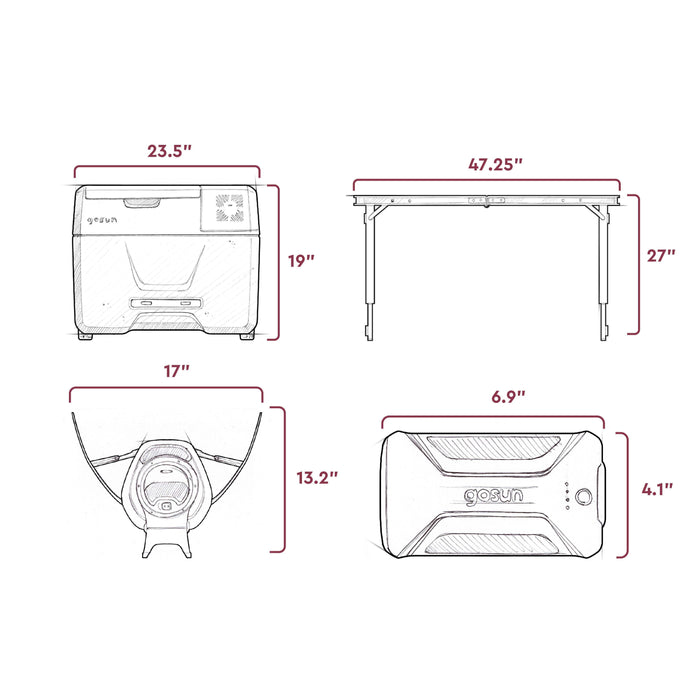
Join the Off-Grid Revolution: Your Next Steps
Ready to embrace the freedom of off-grid living? Your next steps are clear: plan, prepare, and dive in. Start by researching and investing in quality solar cooking gear like the GoSun Solar Kitchen. Educate yourself on solar energy and how to make the most of it. Connect with a community of like-minded adventurers who can share their experiences and advice. And most importantly, take that first step towards a more sustainable, self-sufficient lifestyle. The off-grid revolution is waiting for you.
Packing List for a Solar-Powered Trip
-
Solar cooker and panels
-
Rechargeable batteries and power bank
-
LED lights and solar lanterns
-
Portable water filter
-
Insulated cooking pots
-
Durable, multi-use utensils and cookware
-
Non-perishable food items and spices
-
Weather-appropriate clothing and sturdy footwear
This packing list will ensure you’re well-equipped for a solar-powered adventure. Each item is chosen to maximize efficiency and minimize environmental impact, keeping you prepared for whatever the journey brings.
Expanding Your Horizons: Additional Off-Grid Tools and Accessories
While a solar kitchen is a fantastic start, there are plenty of other tools and accessories that can enhance your off-grid experience. Consider a solar shower for hot water on demand, a hand-cranked blender for smoothies and sauces, or a solar dehydrator to preserve your harvest. With the right gear, your off-grid life can be as comfortable and convenient as you desire, all while staying true to your eco-friendly values.
Frequently Asked Questions (FAQ)
How does the GoSun Solar Kitchen work?
The GoSun Solar Kitchen uses parabolic reflectors to concentrate sunlight onto a tube, which heats up and cooks the food inside. It’s a simple yet effective way to use solar energy for cooking. The kitchen also includes solar panels to power other devices, like a fridge or charging station, making it a complete off-grid solution. It’s about harnessing the power of the sun in the most efficient way possible, and GoSun has perfected the art.
Is the GoSun Solar Kitchen practical for all off-grid environments?
When it comes to versatility, the GoSun Solar Kitchen shines. Designed to be portable and adaptable, it fits a variety of off-grid environments, from mountain retreats to beachside escapes. However, the key factor is sunlight – the more you have, the better it performs. In regions with less sun, you may need additional panels or a backup power source. But don’t worry, GoSun has designed their kitchen to be efficient even in less than ideal conditions, so you can still enjoy the benefits of solar cooking with a little extra planning.
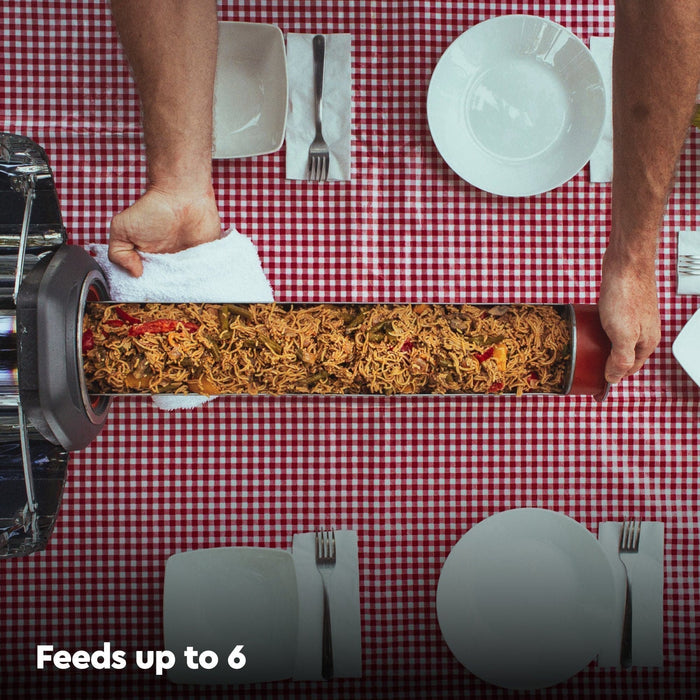
What types of food can you prepare using GoSun Solar Kitchen?
The beauty of the GoSun Solar Kitchen is its ability to cook a wide range of foods. Think beyond hot dogs and marshmallows – this kitchen can handle everything from roasted vegetables and grilled fish to baked bread and desserts. The enclosed tube cooking technology allows for even heating, so you can get creative with recipes. Whether you’re in the mood for a slow-cooked stew or a quick solar-fried egg, the GoSun has you covered. The only limit is your imagination!
How do you maintain and care for the GoSun Solar Kitchen?
Maintaining your GoSun Solar Kitchen is straightforward. Keep the solar tubes and reflectors clean for optimal performance – a simple wipe with a damp cloth usually does the trick. Check the seals and latches regularly to ensure they’re tight and intact. For the solar panels, clean them periodically to remove any dust or debris. And always dry the components thoroughly after cleaning to prevent rust or corrosion. With these simple steps, your solar kitchen will be ready for action whenever you are.
Where can I purchase a GoSun Solar Kitchen and what’s the cost?
You can purchase a GoSun Solar Kitchen directly from the GoSun website or through various online retailers like Amazon. Prices vary depending on the model and accessories you choose, but you can expect to invest anywhere from a few hundred to a couple of thousand dollars for a complete setup. Remember, while the upfront cost may seem steep, the long-term savings on energy bills and the positive environmental impact make it a worthwhile investment for any off-grid adventurer.

